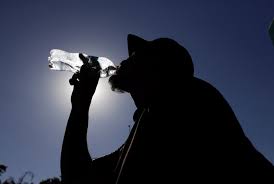
U.S. economic growth probably slowed in the third quarter as hurricanes Harvey and Irma restrained consumer spending and undercut construction activity, but underlying momentum likely remained strong amid robust business investment on equipment.
According to a Reuters survey of economists, gross domestic product likely increased at a 2.5 percent annual rate in the July-September period after a brisk 3.1 percent pace in the second quarter.
The Commerce Department will publish its first estimate of third-quarter GDP growth on Friday at 8:30 a.m. EDT (1230 GMT). Without the hurricane-related disruptions, economists say third-quarter GDP growth would have either matched or beat the pace set in the April-June quarter.
Economists estimate that Harvey and Irma, which devastated parts of Texas and Florida, chopped off at least one percentage point from third-quarter GDP growth. With post-hurricane labor market, retail sales and industrial production data already showing a rebound in activity, Friday’s report will probably have no impact on monetary policy in the near term.
Federal Reserve Chair Janet Yellen cautioned last month that economic growth in the third quarter “will be held down” by the severe disruptions caused by the hurricanes.
The economic recovery since the 2007-2009 recession is now in its eighth year and showing little signs of fatigue. The economy is being powered by a tightening labor market, which has largely maintained a strong performance that started during former President Barack Obama’s first term.
Though U.S. stocks have risen in anticipation of President Donald Trump’s tax reform, the administration has yet to enact any significant new economic policies. Trump wants big tax cuts and fewer regulations to boost annual GDP growth to 3 percent.
TEMPORARY LIFT
“The absence of any fiscal policy change has so far neither supported nor hurt the economy and while any potential tax reform in the future might temporarily lift the growth rate to 3 percent, it will not materially alter the economy’s long-term growth prospects,” said Harm Bandholz, chief U.S. economist at UniCredit Research in New York.
Hurricanes Harvey and Irma, which hurt incomes and undercut retail sales in August, likely crimped consumer spending in the third quarter. Growth in consumer spending, which accounts for more than two-thirds of the U.S. economy, is forecast slowing to below a 2.5 percent rate following a robust 3.3 percent pace in the second quarter.
The storms are also expected to have weighed on investment in nonresidential structures like oil and gas wells, which is forecast to have contracted.
Spending on homebuilding, which was already undermined by land and labor shortages, also probably took a hit from Harvey and Irma. Spending on residential construction is forecast to have declined for a second straight quarter.
But the impact of moderate consumer spending and weak residential and nonresidential construction investment was probably offset by continued gains in business spending on equipment, trade and an acceleration in inventory accumulation.
Businesses likely boosted inventories in the third quarter in anticipation of strong demand. Economists estimate that inventory investment contributed as much as eight-tenths of a percentage point to third-quarter GDP growth.
Inventories added just over a tenth of percent point to growth in the second quarter. Government investment is expected to have rebounded after two straight quarterly declines.









